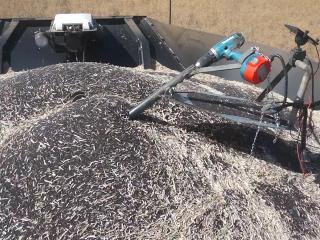Smartphones are being trialled by Department of Primary Industries and Regional Development researchers to more effectively track and combat crop pests.
Results from trials using smartphones to monitor for crop contaminants such as weed seeds and snails will be outlined at the 2019 Grains Research and Development Corporation Grains Research Update, Perth on 25 and 26 February.
A ‘GrainCam’ device was trialled at a Mount Barker site to scan for potential contaminants during harvest.
Department senior research officer John Moore said knowing where the source of a contaminant was within a paddock would allow growers to target control or avoid heavily infested areas during harvest.
“Continuous detection can help growers to quickly identify new unwanted pests at low levels, before they can easily be detected manually or have become well established,” Mr Moore said.
“The use of smartphones offers an inexpensive and readily available option for growers.”
The trial involved a small auger being placed at the outlet of the harvester’s bubble auger to deliver small samples of grain onto a metal plate in front of the smartphone camera that could capture high resolution photos with GPS locations.
The study found GrainCam could be deployed under field conditions but further evaluation was required to ensure detection models were robust under a range of conditions.
Researchers also used image analysis of field photographs taken with mobile phones attached to farm equipment to map snail distribution and density within a paddock.
Department research officer Svetlana Micic said the method could provide an inexpensive technique for mapping snail distribution.
“This methodology was shaped by growers at meetings held by the Regional Cropping Solutions Network in the Albany and Esperance regions in 2017, who wanted inexpensive technologies for snail control that could be adapted for their farming system,” Ms Micic said.
An app was trialled on a site at Gairdner, recording the GPS location and triggering a mobile phone camera when it was pointing towards the ground. This allowed the phone to be mounted onto any wheel, and the combination was called the ‘WheelCam’.
An analysis of the images taken using computer algorithms to detect snails was then tested and used to make contour maps of the distribution and density of snails. This technology will allow growers to target areas with high snail numbers and avoid baiting areas with few or no snails.
Ms Micic said further refinement was needed to determine the best combination of input data and model, to most accurately assess snails on the ground.
Media contacts: Jodie Thomson, media liaison +61 (0)8 9368 3937

